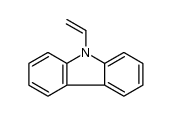Bacteriorhodopsin-based Langmuir-Schaefer films for solar energy capture.
Paolo Bertoncello, Davide Nicolini, Cristina Paternolli, Valter Bavastrello, Claudio Nicolini
文献索引:IEEE Trans. Nanobioscience 2(2) , 124-32, (2003)
全文:HTML全文
摘要
The photovoltaic (PV) solar cell, converting incident solar radiation directly into electrical energy, today represents the most common power source for the earth-orbiting spacecraft, and the utilization of organic materials in this context is here explored in comparison with the present state of the art placing emphasis in organic nanotechnology. Poly[3-3'(vinylcarbazole)] (PVK) was synthesized by oxidative polymerization with ferric chloride of N-vinylcarbazole. The resulting polymer was then deposited on solid support by using the Langmuir-Schaefer (LS) technique. The pressure-area isotherm of PVK revealed the possibility of compact monolayer formation at the air-water interface. Different layers of PVK were doped with iodine vapors. The cyclic voltammetry investigation of PVK-doped I2 showed a distinctive electrochemical behavior. The photoinduced charge transfer across a donor/acceptor (D/A) hybrid interface provided an effective method to study the PV properties of the composite LS films. The results are compared with other approaches within the biological framework, such as bacteriorhodopsin (BR), and organic nanostructured materials.
相关化合物
| 结构式 | 名称/CAS号 | 分子式 | 全部文献 |
|---|---|---|---|
 |
聚(9-乙烯咔唑)
CAS:25067-59-8 |
(C14H11N)x |
|
A facile route for the synthesis of poly(N-vinylcarbazole)/m...
2008-11-01 [J. Nanosci. Nanotechnol. 8(11) , 6031-7, (2008)] |
|
Monolithic poly(N-vinylcarbazole-co-1,4-divinylbenzene) capi...
2013-09-07 [Analyst 138(17) , 5089-98, (2013)] |
|
[The study of electroplex emission based on PVK/BCP].
2005-05-01 [Guang Pu Xue Yu Guang Pu Fen Xi 25(5) , 669-71, (2005)] |
|
A specific embedding resin (PVK) for fine cytological invest...
1982-07-01 [J. Ultrastruct. Res. 80(1) , 89-97, (1982)] |
|
Photoinduced electron transfer and hole migration along copo...
2007-04-01 [J. Nanosci. Nanotechnol. 7(4-5) , 1419-26, (2007)] |